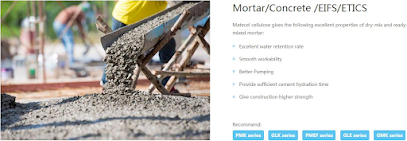Compare siphon toilets and wash down toilets which is better for you
If you're considering buying a brand new toilet, you're likely to see the terms rinse and siphon used fairly frequently, as well as product details, but what does that mean? And more importantly, why should you care?
Siphon and flush toilets are two completely different flushing technologies that can affect the overall performance of the toilet. So when it comes to siphoning or flushing toilets, which is a better choice?
What is a siphon toilet?
Personally, I've always thought the siphon toilet was the best choice for a toilet. You will also find that they are more popular in the US.
How do they work?
The distinctive feature of the siphon toilet is its S-shaped running water channel. This practical drawpipe shape slows the water down as it leaves the toilet. Most toilet designs today have an all-glass hatch.
The glaze (also located on the outside) not only protects the surface of the toilet from bacteria and dirt, but also makes it easier for water to flow through the runways, reducing the number of times the toilet can get clogged.
When the flush lever is pressed, water quickly flows out of the tank and toilet and displaces air from the drain line.
During flushing, the water level of a siphon toilet is higher than that of a flush toilet. The water level is designed to form a seal that prevents the stench of the sewer system from returning to the bathroom.
Also, the siphon toilet is just bigger -- about 7 "x 8". If you have limited bathroom space, the long walk and bowl on the toilet may not be ideal. However, the toilet also comes in shorter models.
As a result, the water forms a vacuum, creating a siphon mechanism that allows toilets and tanks to quickly replenish fresh water. Siphon toilets have a flush valve with a larger diameter, but a narrower valve than flush toilets.
This makes for a strong and strong flush, which is ideal for removing heavy solid waste. For this reason, you'll find that these toilets are less likely to leave toilet streaks or cause bathroom smells.
The characteristics of siphon toilet
The drainage channel is smooth, narrow and s-shaped
Has a strong impact, can minimize the waste residue
The toilet base is longer
The toilet has a higher water level
What is a wash down toilet?
Wash down toilets work a little differently, and you probably won't find anything as common on the American market as siphons. However, many European toilets use this type of toilet flush system.
How do they work?
Wash down toilets have a shorter valve and are usually about four inches wide (about twice as wide as siphon toilets). When the button is pressed, water gushes from the tank into the toilet and flushes liquid or solid waste from the wider sewer line.
Wash down toilets use the gravity flow and weight of the water in the tank to flush out waste from the toilet.
So for this type of toilet system, the weight of the water coming out of the tank creates flushing mechanisms -- a big reason they tend not to clog as easily.
On the downside, however, they are known to hold smells and have more bowl stripes. Sure, you could use a toilet brush to quickly remove streaks from your bowl, but who really wants to do that?
This is due to their shallow toilet bottoms and narrow water surfaces. When solid waste enters the toilet, it is not completely submerged in water, allowing order to seep into the air in an instant if it is not flushed immediately.
One of the biggest ways to prevent this is to perform a quick "courtesy flush" or even a few follow-up flushes if needed. In addition, many flush toilets have dual flush systems to save water.
With these types of systems, you can have one button for liquid waste and another button for solid waste.
The characteristics of wash down
The drainage channels are wider and shorter
The total surface area is smaller
There's more of a flush button than a lever.
Many include a dual flush button to improve water efficiency.
Siphon and wash down toilets
When it comes to choosing a toilet tank, flush and siphon toilets are usually the most common.
Once you've narrowed your choices down to these two, you just need to consider your family size, dynamics, and overall bathroom preferences to determine which option is best for you.
Which is better?
If we're going to do a comprehensive comparison of siphon and flush toilets, it's best to do a side-by-side comparison.
So you can quickly see the main differences. If you're still not sure which toilet is best for you, take a look at their main features.
Conclusion
As you can see, if you prefer quieter toilets and are less prone to waste smells, siphons may be more advantageous.
But if you prefer a toilet that handles more waste but has the least tendency to clog, a flush may be a better choice.


评论
发表评论